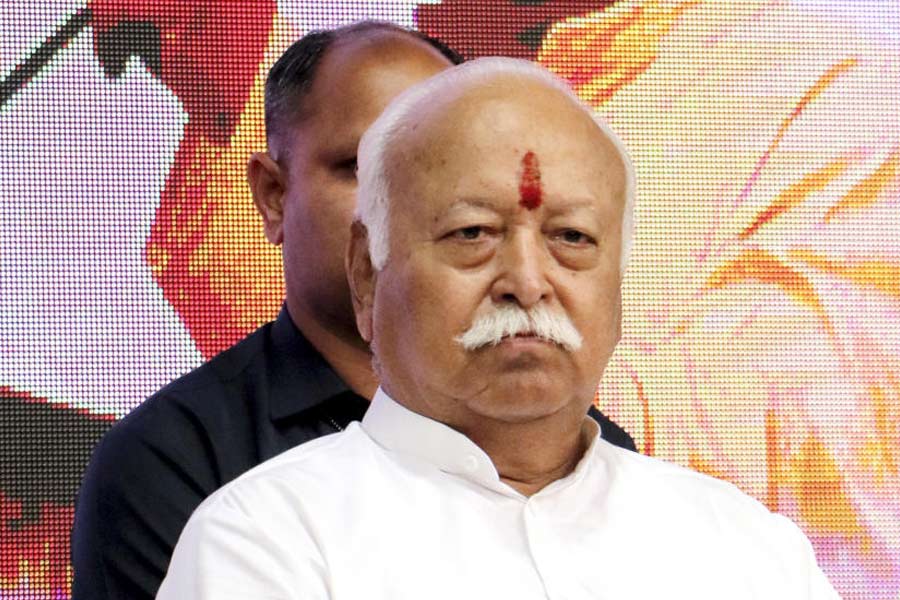Among the online initiatives that have kept the art scene buzzing during the pandemic are Delhi Art Society’s shows. Its second one, which ended on September 28, presented 20 artists, each contributing two works.
Akash Choyal’s fibreglass wall pieces are, with their protruding overhangs and stairs, slides and doorways, invitingly 3-D. At the same time, however, cartoon figures, doodled in acrylic lines, are scattered all over a vertical space in precarious vignettes, dispersing focus and turning the two scenes into a chance theatre of visual monologues. Bhola Kumar builds up tension by counterpointing the textured surfaces of marble with interlocked bands sculpted out of it that seem to writhe and wrestle to pull themselves free from the cradling stone in one piece and a solid trunk in the other. The accent that sculptors Shovin Bhattacharjee and Rajesh Baderia place on glistening stainless steel — Subodh Gupta’s favourite material — brings to mind Anish Kapoor’s strategy of reflecting on surfaces the flow of the physical environment around. The undulations of the sheesham wood pillar in Baderia’s It’s Me make it particularly noticeable.
Akhilesh, known for impishly skipping patterns that verge on illegible form has decided, this time around, to play with form in his silk screen prints. Form that’s weightless, fleeting, disintegrating into a background scarred with smudges that predict an emerging pattern. In We Are Talking and Printing Yellowish, the elongated body of an animal, folkish in its simplification and flat as a cut-out, leaves an uneasy hint: is it trapped for slaughter? A debunking humour lights up Chandrasekhar Wagmare’s woodcut, Aim for Golden Shower Tree, which could be, with its medieval knight in armour riding a horse, something of a spoof of the delusional chivalry of Don Quixote. Vrindavan Solanki’s etchings of run-down houses in sepia are pleasantly nostalgic but not unusual. Leticia Alveres, however, exploits the powerful directness of woodcut to present a timeless tragedy that echoes the multiple agonies of the marginalized as grieving women, resigned to their vulnerability, trudge along in a line (picture). The work immediately brings to mind the grim spectacle of large-scale migrations on foot, whether of refugees or of labourers. Their fallen companion perspicaciously reminds viewers of the recent attacks on Dalit women.
When it comes to painting, Ketaki Roy Choudhury’s acrylics — on glass and acrylic sheets, respectively — stand out. Fossil is emotional, troubled. Its thin clouds of drifting paint, charged with lines of lightning, harbour dark cores and trail dissolving penumbrae, while the hushed blue-grey of the forest in Grey Silence is seductively mysterious, folkloric. Watercolour, often seen in reflective naturescapes, is piled on in broad, brusque strokes by Anand Singh to build up a hefty, muscular wreckage shedding an untidy litter of little lines. Another abstractionist to note is Girish Urkude. Interestingly, the breezy jostle of sweeping acrylic lines in black indicate a nervous lyricism in one work but appears to summon up an urban jungle in the other.
Nature is idealized by Bhagat Singh as a pristine Eden. The bright palette and stylized details come from three sources: Indian miniatures, Gond art and Primitivism. What Masoom Khambhayta’s cityscapes share with the miniature is flatness of space. Significantly, the artist’s cities aren’t gargantuan because, apparently, they abjure conflict with Nature and are hence blessed by its bounty. But Nishi Nitya’s withered Banyan Tree, bearing its drying, ashen canopy overhead, predicts a toxic future ahead. Hem Raj’s geometric landscapes and Ritu Pandey’s subtle mix of media, Jagadish Chander’s faces, sketched with brisk, tousled acrylic strokes and Santosh Verma’s chatty amalgam of influences — from Juan Gris to Picasso — must be mentioned as well.











